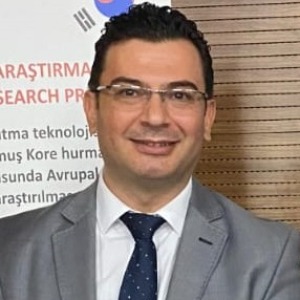Title : Potential for prebiotic food supplement production from by-products of dried persimmon (Diospyros kaki)
Abstract:
The increasing emphasis on sustainability in the food industry has heightened interest in converting fruit processing by-products into value-added functional ingredients. Persimmon (Diospyros kaki), a fruit with growing global production, generates significant amounts of peels and fruit part residues during the drying process. These by-products are rich in soluble dietary fibers (pectin, hemicellulose), polyphenols, and oligosaccharides, which are considered natural sources of prebiotic compounds. Therefore, this study aims to evaluate the potential for producing prebiotic supplements from dried persimmon processing by-products.
In this context, the functional component composition of persimmon processing residues was analyzed based on literature data, and their usability in prebiotic supplement formulations was assessed. The effects of bioactive fractions extracted from the peels on gut microbiota were reviewed through in vitro fermentation and enzymatic digestion studies. Furthermore, potential applications such as extraction of active compounds and enrichment of functional food products were discussed.
Dried persimmon peel contains hemicellulose and fructooligosaccharides, which may support the growth of beneficial gut bacteria and exhibit prebiotic effects. These compounds can enhance the production of short-chain fatty acids, thereby contributing to improved gut health. In addition, phenolic compounds such as gallic acid, kaempferol, quercetin, epicatechin, and catechin were identified. These polyphenols can modulate gut microbiota and serve as next-generation prebiotics due to their transformation into bioactive metabolites by microbial fermentation. The presence of tannins in persimmon peel may also provide anti-inflammatory and microbiota-balancing benefits. Persimmon peel is also rich in carotene content, which may contribute to intestinal health through its indirect effects.
The presence of bioactive components in persimmon peel that have prebiotic properties and that indirectly contribute to health even though they do not have prebiotic properties can make the products obtained from this product more beneficial. In conclusion, the findings indicate that by-products of dried persimmon processing not only reduce environmental waste load but also offer economically viable and health-promoting solutions in the field of functional foods. The utilization of such fruit residues as functional food ingredients holds significant promise for both rural development and the growing prebiotic food market.




